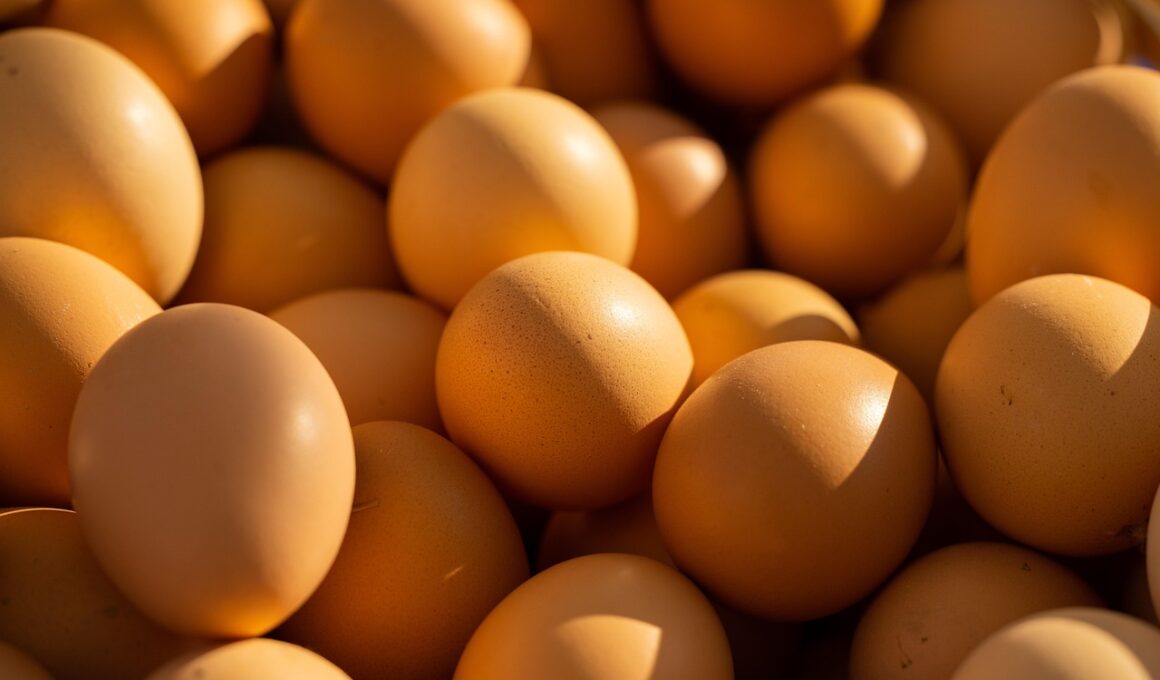Understanding Your Dog’s Nutritional Needs on a Raw Food Diet
As pet owners, understanding your dog’s nutritional needs is essential, especially when considering a raw food diet. Raw diets include raw meat, bones, fruits, and vegetables, aimed at mimicking ancestral eating patterns. To ensure proper nutrition, it’s crucial to balance the diet correctly, making sure your dog receives all necessary nutrients. This diet features protein-rich foods that can include beef, chicken, lamb, and fish, enriching your dog’s health. However, it’s vital to avoid ingredients that could upset their digestive system, like certain grains or processed foods. Additionally, dogs require calcium and phosphorus for optimal bone health, which can be sourced from raw bones. Still, you should do thorough research or consult professionals to ensure that you provide a balanced diet. Too much protein or fat could lead to health problems, such as pancreatitis or obesity. When transitioning to a raw diet, it’s recommended to do so gradually, allowing your dog’s digestive system to adjust and minimizing potential digestive issues. Overall, a well-planned raw food diet can lead to improved energy and health for your furry friends.
The Benefits of a Raw Food Diet for Dogs
Switching your dog to a raw food diet can yield multiple benefits, contributing to their overall well-being. One major advantage is improved coat quality, as natural fats and proteins result in shinier, healthier fur. In addition, a raw diet often promotes cleaner teeth and healthier gums, which reduces the risk of dental diseases. Raw feeding can help improve energy levels, resulting in more active animals who can engage better during playtime or walks. Another compelling benefit is that many dog owners report fewer allergies, as raw diets do not contain common allergens present in kibble, such as grains. Dogs can also achieve a healthier weight through balanced diet practices, avoiding excessive calorie intake and ensuring proper portion sizes. It’s essential to monitor your dog for any adverse reactions, as sensitivities can vary based on individual dogs. Furthermore, better digestion often accompanies a raw food diet due to its natural ingredients and the absence of artificial additives. Finally, providing fresh, whole foods may even enhance your dog’s mood, leading to a happier companion overall, so weighing these benefits is critical.
When transitioning your dog to a raw food diet, proper preparation can significantly enhance the success of this dietary change. First, ensure you choose high-quality meats and vegetables sourced from reputable suppliers. The safety of the food you’re providing is crucial, given that raw foods can contain harmful bacteria if not handled correctly. Store meats properly in sealed containers and always practice safe food handling techniques to reduce potential exposure to pathogens. Gradual introduction is also vital for easing any digestive disturbances. Start with smaller portions and slowly increase the amount of raw food over several days. Monitor your dog closely during this transition, keeping an eye on their stool quality and any digestive issues. Some dogs may initially experience increased thirst or slight digestive upset, which is normal. Offering variety in the diet will not only keep it interesting for your pet but also ensure they receive a broad range of nutrients. Introduce new protein sources gradually, and consider consulting with a veterinarian to guide you in balancing the diet appropriately for your dog’s specific needs, fostering a healthy transition.
Essential Nutrients in a Raw Food Diet
To effectively meet your dog’s nutritional needs on a raw food diet, understanding the essential nutrients is key. Primarily, protein forms the base of your dog’s diet, derived from high-quality meat, fish, and eggs. Ensure that these protein sources are lean to prevent excessive fat intake, while also incorporating organ meats that offer vital nutrients. Additionally, fats are critical in providing energy; opt for sources like fish oil for omega-3 fatty acids, which support skin health. Carbohydrates can be derived from vegetables and fruits, fostering digestive health, although they should comprise a smaller percentage of their diet. It’s advisable to include fibrous vegetables such as carrots or leafy greens, which assist in digestion and offer vitamins. Furthermore, bones are crucial for calcium, phosphorus, and trace minerals, crucial for bone strength. To meet all nutritional needs, always ensure the diet is well-balanced. Regular consultations with a veterinarian can help monitor the nutrients and ensure your dog thrives on this diet, thereby reducing the risks associated with nutrient deficiencies and imbalances.
The role of hydration in your dog’s diet cannot be overlooked, especially when feeding raw foods. While many assume dogs get sufficient water intake through their food, it’s essential to encourage direct water consumption. Raw diets may have higher protein levels, which can increase their hydration needs. Always provide access to fresh, clean water several times throughout the day to prevent dehydration, especially as protein intake increases. Furthermore, moisture-rich vegetables like cucumbers or watermelon can be offered, assisting in hydration while providing extra nutrients and enjoyment. Dogs with specific health conditions or those transitioning to a raw diet may require closer monitoring of their water intake. Observe their drinking behavior and scent during physical activities, ensuring they remain hydrated during exercise. During hot months, providing ice cubes or offering chilled fruits can be a fun way to entice them to drink more water. Additionally, if you observe any signs of dehydration, such as lethargy or dry gums, consult your veterinarian immediately for guidance and appropriate solutions. Keeping your pet well hydrated is an essential part of maintaining their health and wellness.
Challenges of Feeding a Raw Food Diet
Despite the numerous benefits associated with a raw food diet, several challenges arise that owners need to navigate. One significant issue is that raw diets can be labor-intensive. Preparing balanced meals requires time and effort to ensure the right combinations of proteins, fats, and carbohydrates are achieved. Expect to invest time in planning meals and sourcing the right ingredients regularly. Additionally, creating a raw diet necessitates an understanding of proper food handling and storage practices to prevent contamination and ensure freshness. This knowledge is crucial in ensuring your dog receives safe and healthy meals. Another challenge is the financial aspect; raw meat, especially high-quality options, can be more expensive than traditional dog foods. This may require budget adjustments in some households. It’s also necessary to consider that not all dogs may adapt well to a raw diet. Some may struggle with chewing bones, or developing digestive issues if introduced too quickly. Monitor your pet closely throughout this feeding journey, and consider collaborating with a veterinarian who can assist in crafting a suitable plan tailored to your dog’s specific needs.
In conclusion, understanding your dog’s nutritional requirements on a raw food diet is vital for fostering their well-being. Successfully navigating this journey can come with its share of challenges and rewards. It’s imperative to invest time in researching and planning meals, ensuring that you provide a balanced diet to meet their needs. The diversity in protein sources, along with proper hydration strategies and nutrient awareness, will enable every dog owner to create ideal meal plans. A raw food diet can genuinely enhance dogs’ health, energy levels, and overall happiness when implemented correctly. However, the keys to success lie in thorough consultation with veterinarians and diligent observation of your dog’s behaviors and reactions. Commit to continual education on raw feeding practices, staying updated with the latest research on dog nutrition. By being attentive to your furry friend’s dietary needs and preferences, you contribute to a lifetime of health and joy. Transitioning them to a raw diet can be a wonderful experience, leading to positive health outcomes and a deepened bond between you and your beloved companion.


